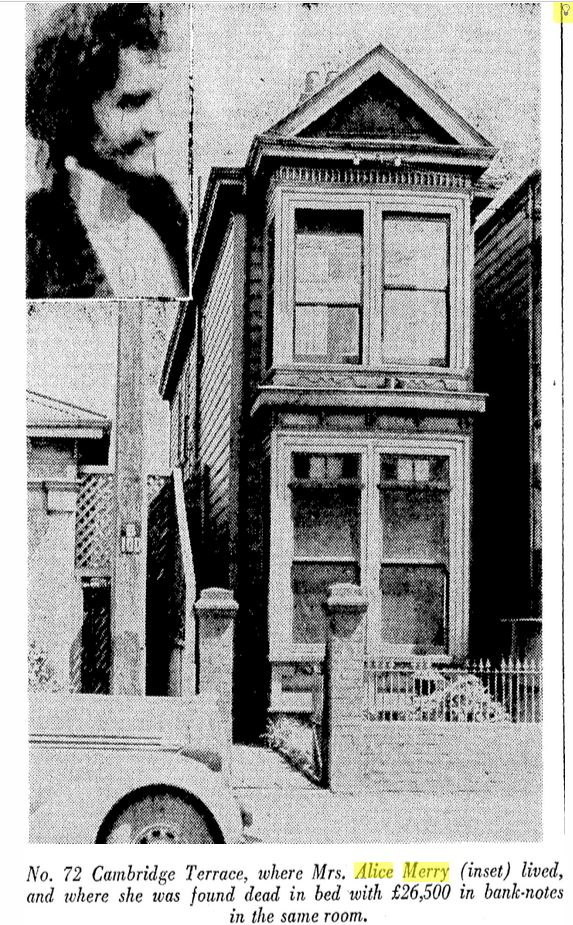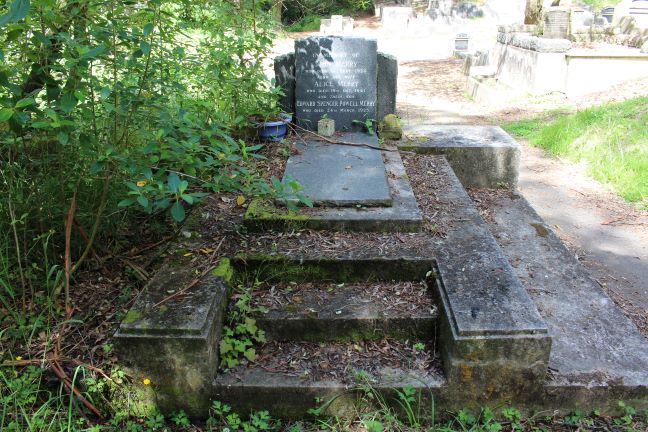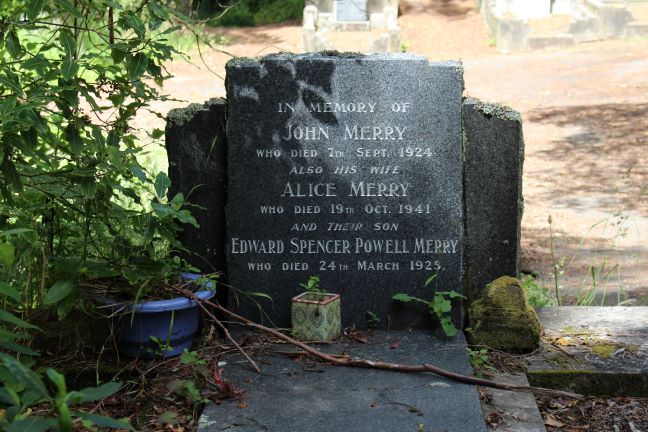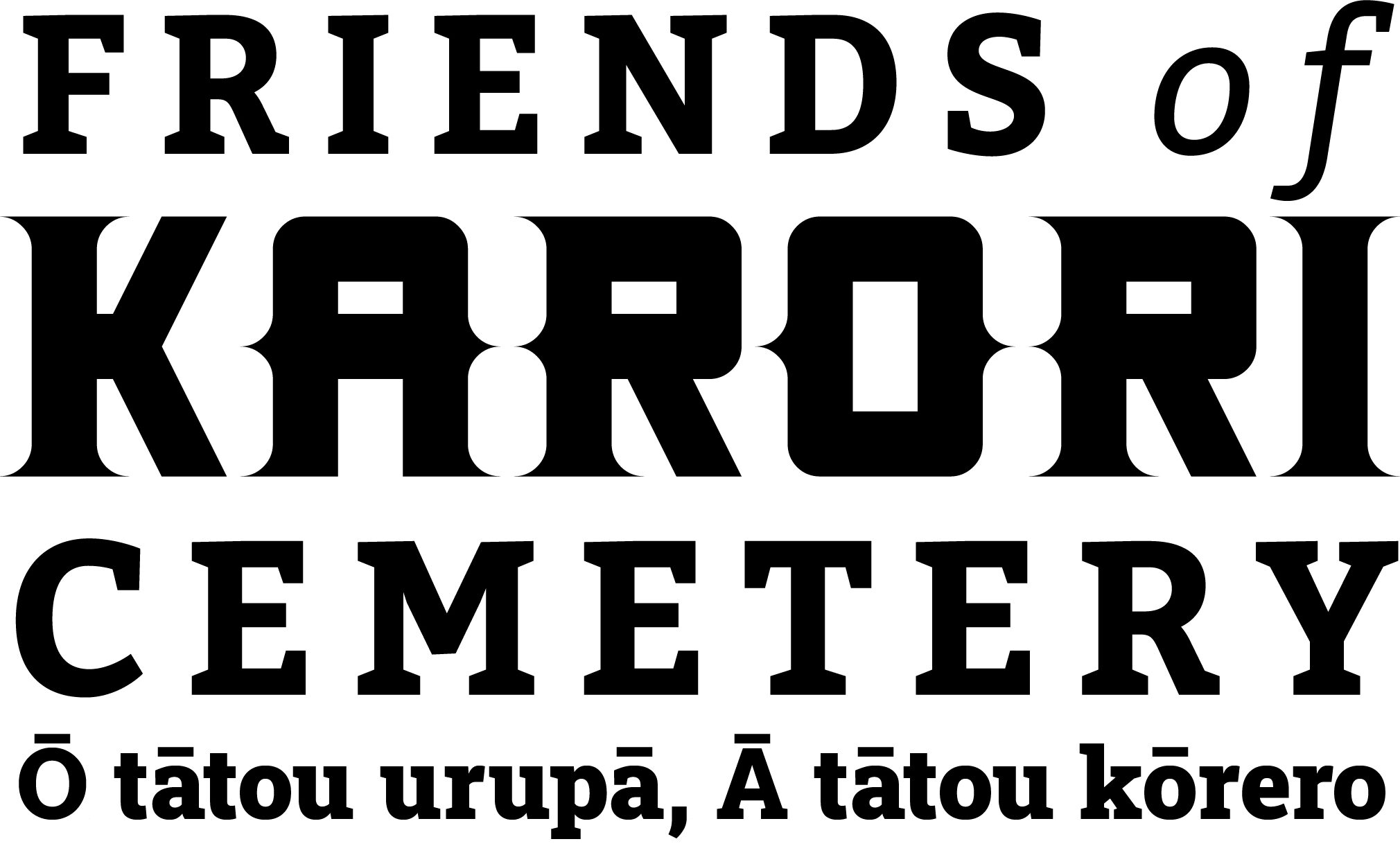John was born in Lincolnshire, England in 1851. His parents were John and Harriett (nee Smith). He married Alice Powell, a native of Truro, England in 1880 in Wellington, New Zealand. Their only child Edward Spencer Powell Merry was born in 1882. He was known as Eddie.
At the start of their marriage, John and Alice were in business together in Courtenay Place – he as a shoemaker and she as a dressmaker. They saved hard and bought one property after another. In 1883, John purchased Allotment 6 of Town Acre 225 fronting both Grainger Street and Courtenay Place for £155. In 1884, Alice was listed at the top of a roll of Burgesses of the city of Wellington and managed a number of rental properties on her own account.
In 1893, one of John’s investment properties in Grainger Street caught fire. Before the brigade could get water to the three-room cottage, it was gutted. The building was ensured for £65 but the contents belonging to a man named Stacey were not. The cause of the fire was thought to have been cinders falling from the fireplace to the floor.
In 1900, John was charged with failing to pull down two houses in North Street that were deemed unfit for occupation and dangerous to public health by the City Council. The Sanitary Commissioner deposed that the house was so old that anyone who jumped inside it caused everything to rattle. It was reported that in places the weatherboards were full of dry rot and some studs were missing. John said he had owned the house for thirteen years and along with the evidence of a builder, thought it would easily last another 15 years. The judge considered it to be proved that the houses were badly designed, badly built and badly kept. He was of the opinion that the high standard being set by the City Council was desirable and necessary. The houses were to be taken down within one month.
In 1900, Alice made a £3,500 claim for compensation for land in the Grainger Street block taken by the Harbour Board. The Board assessed the claim as £1,870. Mr James Lockie was assessor for the Harbour Board and Mr T.K. Macdonald the assessor for Mrs Merry. After numerous witnesses were called to comment on the value and potential of the land, the Compensation Court award Alice £2,449. She took the matter to the Petitions Committee of the House of Representatives who decided that the provisions of the Public Works Act were complied with.
In 1902, a charge was bought against Alice by the City Solicitor for erecting a dwelling in Sage’s Lane without having provided suitable sewage drains and without obtaining a permit.
In 1913, John was committed to the Porirua Hospital. Mr Wilford gave notice in the House of Representatives to ask the Minister for Justice whether he will investigate the circumstances, as the friends of John Merry were satisfied that he should not be committed to such an institution. In reply, it was said that Alice and Eddie were interviewed, as was Mr Baker (Land Agent) and on hearing their statements as to Mr Merry’s condition, he was taken to Lambton Quay Police Station and examined by two doctors. Ordinary procedure was followed and all were satisfied that his case was a proper one for treatment at the hospital.
The Public Trustee took over the administration of John’s estate and managed his properties and interests. John was frequently visited by his wife and relatives. Alice last saw him on 12th August 1924 and he died on 7th September at Porirua Hospital, aged 73. John was buried in an unmarked plot at Karori Cemetery. His estate was worth £14,302 and the Public Trustee administered it. Alice sued the Public Trustee in the 1930s for mismanagement of the estate.
Their son Eddie suffered from mental health issues also. In 1923 he was placed in a ‘mental hospital’ and was discharged a few months later. He was described as never associating with any other people, except his mother, and was a very quiet disposition. Eddie died on 24th March 1925. His death was self-inflicted. He was the first interment in this plot.
In 1926, Alice was bought before the Courts for not submitting an account of Eddie’s estate. She said the value of his estate was disputed and she would not tell lies and sign the documents. She was convicted of the charge and given four weeks to file the account. Alice ‘waving her finger towards the Bench: “Convicted! Oh, thank you, sir. It is the first time I have ever been convicted in my life”’.
In 1941, neighbours concerned they hadn’t seen Alice for a while called the police who broke into her home on Cambridge Terrace. They found her dead in bed and £26,500 of bank notes stored in various locations around the house. Some were secreted in the lining of a chair and more in a coat, the rest were in a bag under the bedclothes. An inquest determined she died of heart failure. She was 83 years old.
A handy man named Mr Jensen who used to do work for her weekly told the newspaper that he once took a picture off the wall and found property deeds behind it. Another time he pulled back the linoleum to sweep and was amazed to find rows of bank notes lying there. He put the linoleum back and said nothing. Mr Jensen described Alice as living very frugally with one old-fashioned radiator and cooking on a small spirit stove. He was required to knock three times when he arrived to indicate his identity. Her tenants sharing the house (although they used a a separate entrance) said that Alice always said she was poor and could not afford to repair the house.
The newspaper described Alice as dressing conspicuously in a Victorian or Edwardian style and was a ‘striking and well-known figure in the city’. It was estimated that she owned more than 40 properties. The media went into a frenzy over finding her Will. The house was put under police guard while the search was made and advertisements placed in the newspaper. No Will was ever found.
Alice had three sisters and a brother who all predeceased her. Her estate was worth £104,344 and was ultimately divided among her six nephews and nieces. This has the current purchasing power of £4,105,560. Death duties were £55,700. The estate auctioned 50 houses & shops and 43 acres of land in 1943. The land was at Houghton Bay Road and WCC purchased this for £1350 for use as a controlled tip site.
Alice is the second interment in this plot and John’s name is included on the headstone although he is buried elsewhere at the cemetery.
Plot: *Ch Eng 2/G/524
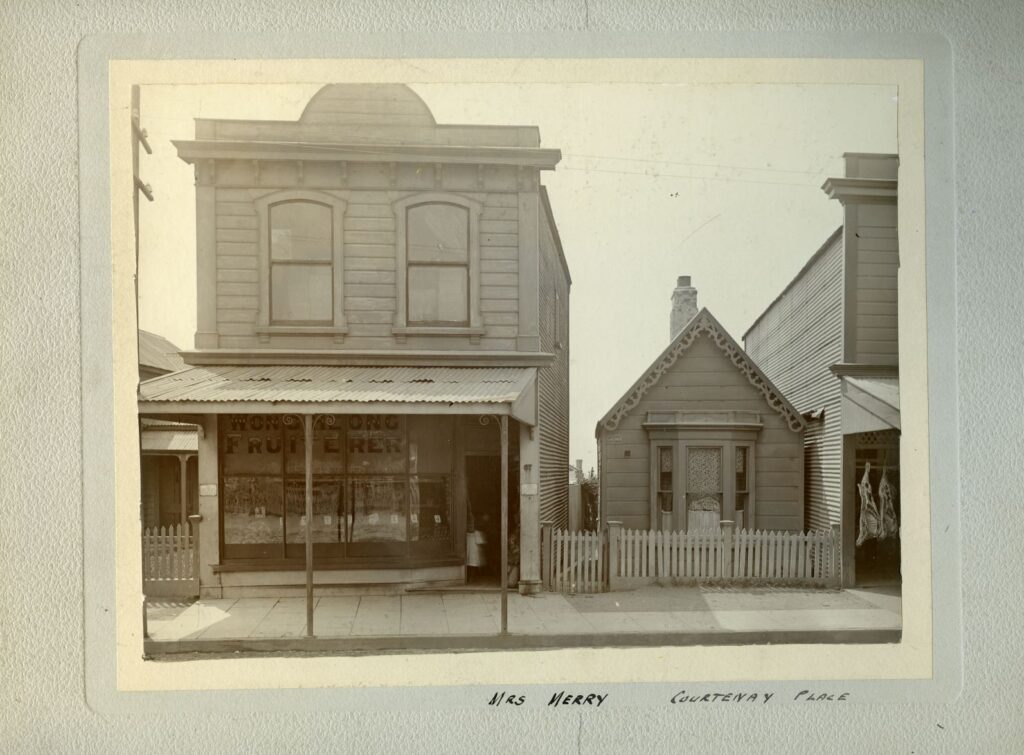
Date Range:
Circa 1898
Description:
Mrs Merry. Wong Heong Fruiterer, Merry Cottage
Wellington City Council Archives, AC026-22
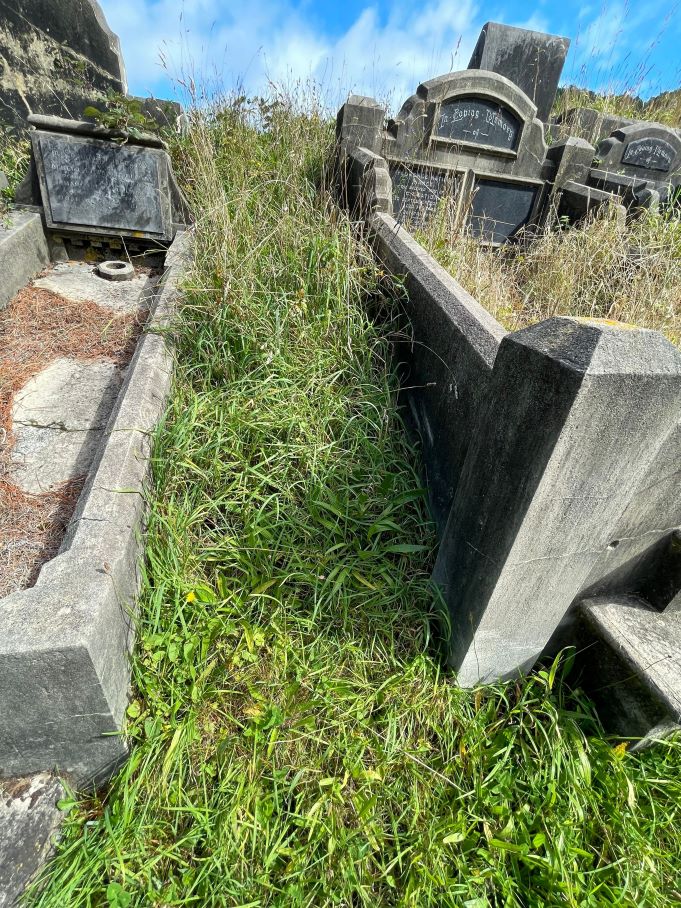
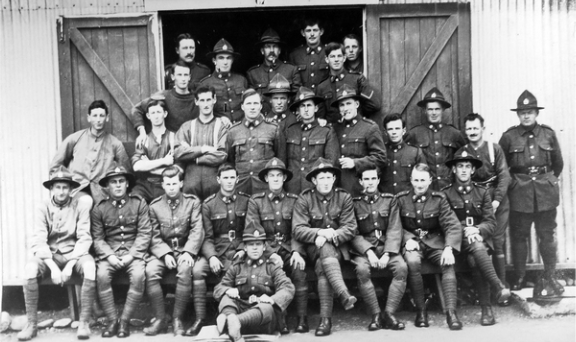
Full description:
Shows 28 men in the doorway of Hut 67, Trentham Camp. It is thought Bruce Bibby sits at left in the front row. This does not match the description below.; Written on reverse: ‘August 24th 1918 – Hut 67, Trentham. 16 Platoon, D Company, 43rd Reinforcement. In front, E.S.P. Merry (Wellington). Right to left, sitting; Ted Davies, Milligan, J. Kelling, Edgar Wallace, T Walker, Sweeney, T W Thompson, James Bruce Bibby, A E Stringer.; Standing: Willie Telfer, Roy Coley, A A McMillan, ?, McKenzie, S O Jones, Pitcher, Swenson, ?, ?, Tom Clark.; Back: Tontie Bailey, ?, ?, W Gill, Perry, Stan Slight, F Hardy.
https://masterton.spydus.co.nz/cgi-bin/spydus.exe/ENQ/OPAC/ARCENQ?SETLVL=&RNI=3996703
